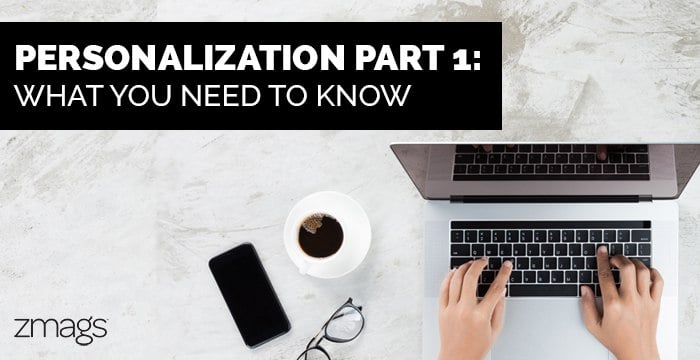Personalization is a word that’s bandied around constantly in the marketing and ecommerce industry. From webinars, to twitter hashtags, to blog posts (including this one), it’s a buzzword marketers can’t seem to get away from. Often, personalization is touted as “the future of retail,” or “the difference between revenue winners and losers.” But personalization itself is a nebulous word. What is it, and how is it executed?
What is personalization?
Personalization is the customization of the shopping experience through the strategic use of data. This data can include on-site behavior, purchase history, demographics, and more. If a shopper typically navigates directly to a denim category page, personalization technology can serve up denim options immediately when this shopper reaches the homepage. Or if a shoppers’ location is experiencing a series of rainy days, a pop-up could recommend a collection of raincoats. Personalization requires the right tools. Software by companies like IBM, Adobe, and Google uses deep-dive analytics to drive personalization strategy. Many leading eCommerce platforms have personalization features, and marketing automation tools have options as well. Regardless of which tool is used, third-party vendors are often needed to provide the necessary data.
Why prioritize personalization?
Ultimately, eCommerce personalization is more than a trendy buzzword; when done well, it can be a direct driver of revenue. Gartner found that digital businesses that utilized personalization to recognize and act on customer intent increased their revenue by up to 15%. And 75% of shoppers are more likely to purchase from a brand that implements these strategies. Personalization isn’t just about keeping up with trends, it’s a genuine way to generate significant revenue. But this only applies to personalization done right. When eCommerce sites get it wrong – whether by using an incorrect name, providing inapplicable recommendations, or simply being too pushy – it’s a huge turnoff to shoppers. 98% of online consumers have failed to complete a purchase because of a misuse of personalized content. And shoppers have a long memory, therefore a personalization misstep can deter all future purchases. Personalization can completely transform the customer journey. Consumers feel connected to brands that make an effort to provide a customized experience, across every touchpoint. Brands that invest in these personalized experiences are doing more than jumping on the bandwagon; they’re developing the customer relationship for the long term.

